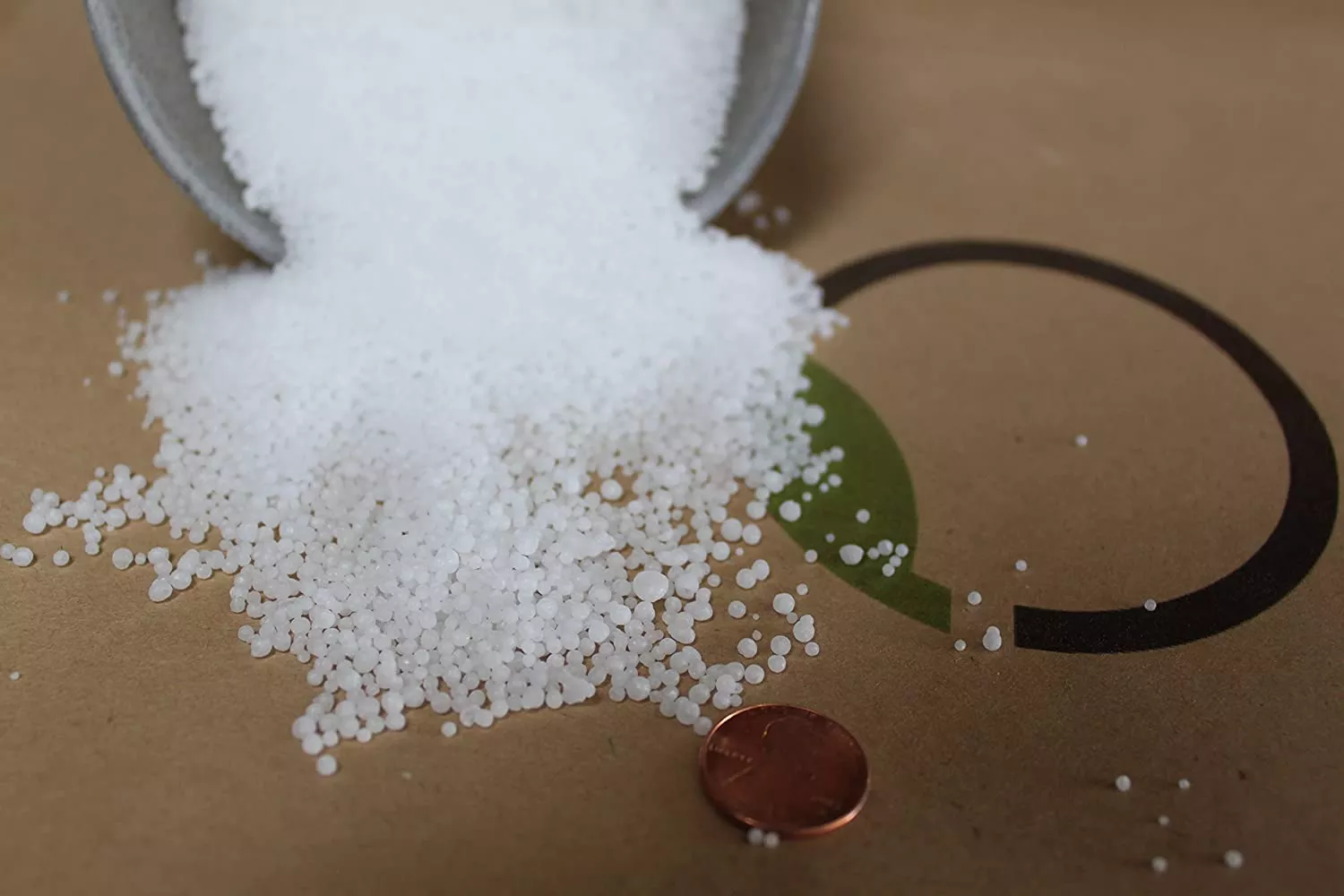Introduction
In taking care of azaleas, the choice of fertilizer greatly impacts their well-being and liveliness. Picking an organic azalea fertilizer is more than just feeding them; it involves environmental conservation and plant safety as well. Unlike chemical fertilizers, these types are obtained from natural sources which do not only protect plants but also the whole surrounding.
Organic fertilizers provide a number of benefits to azaleas starting with improved soil health and reduced chemical leaching. “Organic matter improves soil structure allowing roots to grow deeper and take up more nutrients and water; this leads to healthier plants,” said Dr. Linda Chalker-Scott – an extension horticulturist at Washington State University College of Agriculture, Human & Natural Resource Sciences. This is very important since azaleas have delicate root systems that are prone to damage from being compacted or over-watered.
Besides, their nutrients are slowly released into the soil so they resemble how wild plants feed themselves continuously in nature. Not only does this prevent nutrient burn (which can be caused by synthetic alternatives) but also ensures steady growth which brings out the best appearance in terms of beauty as well as life span for these flowers.
To sum up, using organic azalea fertilizer while gardening helps keep your plants healthy and strong while contributing towards sustainability within our environments. This brief introduction sets the scene for further sections where we shall delve into reasons behind suitability of organic fertilizers on azalea plants among others based on this statement made by Dr L.C.S.–W.S.U.C.A.H.N.R.S., Ph.D., Extension Horticulturist.
What Creates Organic Fertilizers Good for Azaleas?
Organic fertilizers are perfect for azaleas because of their delicate composition and alignment with the natural growth needs of these plants. This implies that organic fertilizers must be used in an environment similar to the one where they were developed – surrounded by rich organic matter. Below are some reasons why organic fertilizer is best suited for this beautiful shrub called azalea.
Materials like animal manure, compost, bone meal, and seaweed extracts usually make up natural or organic fertilizers. These substances undergo decomposition slowly thereby releasing nutrients into soil gradually. It also avoids root burn which may result from synthetic fertilizers high salt index through its slow-release process. Explaining further, Dr Elaine Ingham who is a specialist in soil biology said “Organic fertilizers provide food for soil organisms that in turn make nutrients available to plants as they require them just like nature does.”
In addition to this, these type of fertilizers improve both soil structure and water holding capacity as well as nutrient retention ability too. For example better drainage due to enhanced soil structure brought about by such activities can reduce waterlogging which often causes root rot among other diseases affecting roots especially those of azaleas.
Nitrogen, phosphorus and potassium are some essential elements required by all plants including azaleas but they need them differently depending on various factors such as stages of growth or development among others. Although organic manure contains adequate amounts of these nutrients needed by most crops however it should be noted that azalea bushes particularly require nitrogenous compounds in balanced quantities so that there could not be too much leafy growth at the expense blooming. Conversely most brand names are well balanced i.e., provide many secondary plus micro-nutrients like calcium (Ca), magnesium (Mg) or iron (Fe) which contribute greatly to overall health of azaleas besides improving their color vibrancy.
Azaleas are able to absorb naturally occurring forms of these elements easily leading better growth rates followed by increased flowering. According to Dr Chalker-Scott “the use of synthetic fertilizers lacking in micronutrients can significantly affect disease resistance and blossoming capacity in this type of flowering shrub.”

Choosing the Correct Organic Azalea Fertilizer
Picking the right organic azalea fertilizer involves knowing what your azaleas need and being aware of all the different types available. The best fertilizers for these plants work with their natural growth cycle and soil requirements. Here is some guidance on how to make sense of it all and choose an organic fertilizer that will be perfect for your azaleas.
Different Kinds of Organic Fertilizers: A Brief Overview
Composted Manure – Great general nutrient source as well as a soil structure improver; does wonders for azaleas by giving them a mix of nutrients in proportion while also improving moisture retention capacity of soils.
Bone Meal – Perfect if you want lots vibrant blooms! It contains large amounts of phosphorous which is released into the ground slowly over time. This element plays vital role in root development strength as well as flower production abilities among others things.
Seaweed Extract – Known for its richness in micro-nutrients such as zinc or iron that foster healthy leaves and flowers formation in azaleas; acts also like natural growth stimulant besides increasing resistance against diseases.
Tips for Selecting the Best Organic Fertilizer
Test Soil Conditions: Before buying any type of fertilizer, test your soil to determine its current nutrient composition and pH levels. Slightly acidic soil favors azalea growth hence if yours is too alkaline you should consider using a fertilizer containing sulfur, which lowers PH level.
Choose According To Species: Different species might require specific types or amounts of nutrients. For instance, during early spring nitrogen content needs to be high so as to boost leaf formation especially among evergreen varieties while phosphorous-rich formulas may have more impact on flowering abilities shown by deciduous ones.
Timing And Frequency: Healthy plants bloom better therefore apply organic fertilizers at appropriate times. In most cases this means feeding them twice annually i.e., at beginning but before end of summer when they are actively growing.
According to Dr. Robert Nyvall, a plant pathologist: “Organic fertilizers should be applied at the correct time so as not only to maximize plant health but also minimize the risk of diseases by ensuring that they don’t lack or have excess nutrients during critical periods of growth.”
Through careful selection of an appropriate organic azalea fertilizer type and following application instructions according to identified specific needs; growth rate, overall wellbeing including flowering can be improved significantly. In our next section, we look into how these organics should be used for best results.
How to Use Natural Fertilizer for Azaleas
The proper application of organic azalea fertilizer is necessary for the health and flowering of your plants. The technique and time frame used in applying it can greatly affect its efficiency as well as overall growth of the plant. Below is a step-by-step guide to help ensure that nutrients are absorbed optimally by the plant, thereby benefiting your azaleas.
Guide on How to Apply Fertilizer
When: The most recommended periods when you should apply natural azalea fertilizers are early spring (when new sprouts begin to show) and late summer (before fall sets in). This plan supports azalea’s natural growth and dormancy cycles.
Preparation: Water plants deeply one day prior to applying fertilizers. Moisture aids absorption of nutrients from fertilizers.
Method: Scatter fertilizer uniformly around the base extending up to the drip line but not touching stems or leaves which could scorch them.
Incorporation: Lightly rake top soil layer over applied granules so that they mix with earth better; this also prevents leaching away by rain or irrigation waterings.
Watering: Once done with spreading it, give a light watering which helps dissolve it then carries down through root-zone area essential for uptake into the plant system.
Best Practices in Fertilization
Moderation Is Key: Always follow manufacturer’s directions concerning rates of application indicated on product packaging; too much can burn plants or even kill them altogether.
Watch Plant Response: Monitor closely for signs of improvement or otherwise after feeding your azaleas; healthy foliage indicates successful job while leaf scorching/yellowing may mean excessive feeding.
Tweak According To Outcome: If there’s no expected response in terms of growth/blooming from previous applications made, slightly adjust quantities next time round since local soil conditions sometimes affect nutrient availability
Dr. Hannah Mathers, who worked as a teacher at Ohio State University and served as an extension specialist there, says that “watching how plants respond when fed is important. Sometimes one may have to consider altering amounts applied due to particular soil types found in different regions which alter nutrient absorption abilities thus affecting overall plant health.”
By following these steps and adhering to the best practices, you will be able to supply your azaleas with a sufficient amount of nutrients at appropriate intervals, thereby promoting vigorous growth and abundant flowering. Proper use of natural azalea fertilizers sets the stage for vibrant plant health. We will now look into some organic fertilization troubleshooting tips aimed at keeping your azaleas flourishing.

Solving the Most Common Problems in Organic Fertilization
It is vital to properly apply organic azalea fertilizer. However, there are times when even with best practices, azaleas may show signs of nutrient imbalance. Knowing how to identify and correct common fertilization problems can keep your azaleas healthy and make them more beautiful. Here are some ways of troubleshooting common issues associated with organic fertilizers.
Detecting Under- or Over-fertilization in Azaleas
Under-Fertilization:
- Growth Stagnation: If your plants do not grow as they should or if their foliage looks thin and sparse, it may be a case of lack of nutrients.
- Pale Leaves: When leaves become paler than usual, this indicates that there has been insufficient fertilization with nitrogen and iron being the most likely deficient elements.
Over-Fertilization:
- Leaf Scorch: Too much use of fertilizer can cause leaf burn where edges seem burnt or dried up.
- Salt Buildup: Overuse of fertilizers may lead to salt accumulation in soils, damaging roots thus reducing water intake, resulting in wilting or browning of leaves.
Altering Fertilizing Approaches for Dealing with Specific Health Problems
Balancing Nutrient Supply:
- If underfeeding is suspected, gently increase the rate or frequency at which you apply organic azalea fertilizer following the product’s instructions strictly. You might also consider doing a soil test for identification of specific nutrient deficiencies.
- For overfeeding cases, flush out excess nutrients and salts by leaching soil with clean water then lower amount and regularity of future applications allowing time for recovery.
Improving Soil Conditions:
- Increase soil aeration together with drainage so as to prevent waterlogging which enhances root rot that is commonly caused by excessive application rates.
- Incorporate organic matter such as composts or leaf moulds into soils thereby enhancing structure while increasing ability to hold essential elements, thus acting against both over- and under-fertilization.
According to Dr. Robert Nyvall, who is a plant pathologist, “Getting proper diagnosis right is crucial. Occasionally over and under-fertilization symptoms may overlap hence need for careful observation before making adjustments.”
By being keen with your azaleas’ condition and modifying fertilizing techniques accordingly, you will ensure that they remain healthy and vigorous. Timely addressing helps avoid permanent destruction while keeping them thriving in an organically grown setting. Finally, we will conclude by summarizing benefits as well as good practices of using organic azalea fertilizer plus giving out additional readings and reputable suppliers in the market.
Conclusion
In short, correct application, observation of the plants and adjustment according to the soil condition are necessary to make use of organic azalea fertilizer effectively. This means that healthier growths are promoted in azaleas by doing things naturally but also it is friendly to the environment as well as sustainable for gardening.
Benefits summary and recommended practices:
Ecosystem and Plant Health: Slow release of nutrients imitates natural food provision while fertilizing with organic azalea fertilizer. It avoids burning nutrition more than this does not harm the ecosystem through reducing chemical discharge into water bodies.
Monitor and Adjust: Regularly monitor the soil conditions and plant health. Do changes in the regime of fertilizers depending on actual needs of a plant thus preventing under or over-doing it which might lead to other problems.
Soil Enrichment: The addition of organic matter improves soil structure besides enhancing its nutrient retention capabilities; thereby boosting overall pest resistance among other diseases too.
To learn more about organic gardening or where you can get quality organic azalea fertilizers, gardeners should refer to resources such as Organic Materials Review Institute (OMRI) or their local cooperative extensions office which provide approved lists for products along with detailed guides on how to do organics properly.
Following these tips will create an enabling environment for nurturing healthy azaleas through organic gardening thus realizing its full potential. In other words, successful organic fertilization relies on understanding one’s plants’ natural cycles then responding accordingly so as to foster a thriving garden ecosystem.
Here are some authoritative references related to organic azalea fertilizer :
- University of Florida Extension: Discusses well-drained, organic soils with a specific pH that are best suited for azaleas, highlighting the need for organic amendments and fertilization.
- University of Georgia Extension: Provides detailed information on the care and fertilization of azaleas, emphasizing the importance of organic fertilizers.
- Missouri University Extension: Offers guidance on growing azaleas and rhododendrons, including recommendations for organic soil amendments.







